Vermont, known as the “Green Mountain State,” is home to millions of acres of forest areas, lowland valleys, and more. It’s a birder’s paradise. Vermont provides a diverse range of habitats for birds, including lowlands, hills, and mountains.
A variety of native bird species may be found in Vermont. In Vermont, over 389 distinct bird species can be spotted at different times of the year.
| Image | Name |
|---|---|
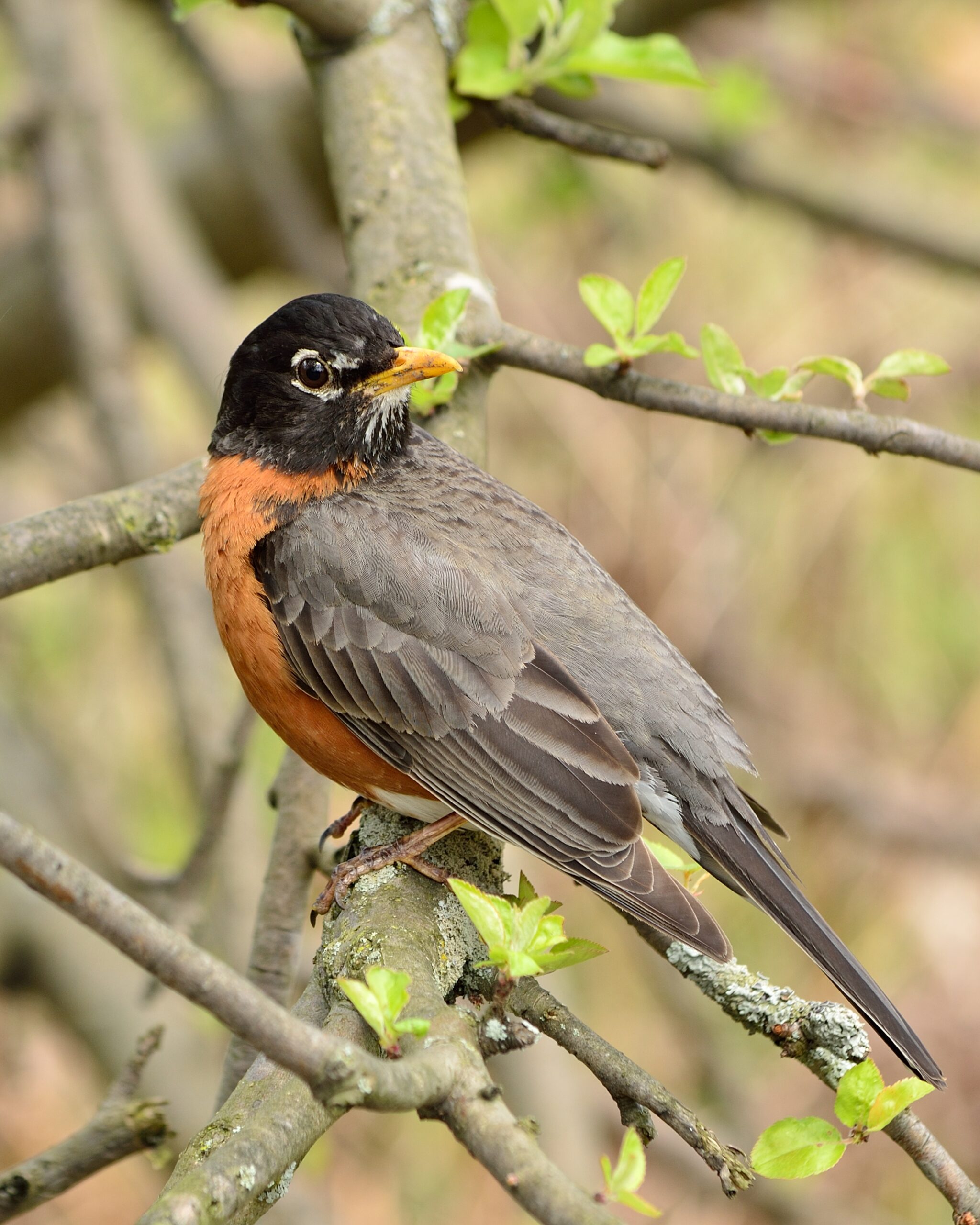 | American Robin |
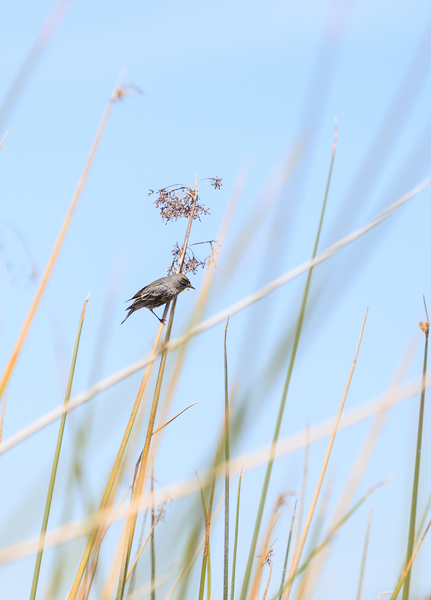 | Yellow-rumped Warbler |
 | Black-capped Chickadee |
 | Pileated Woodpecker |
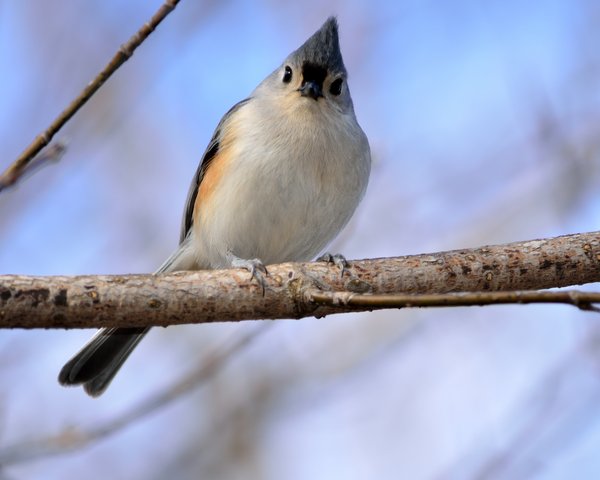 | Tufted Titmouse |
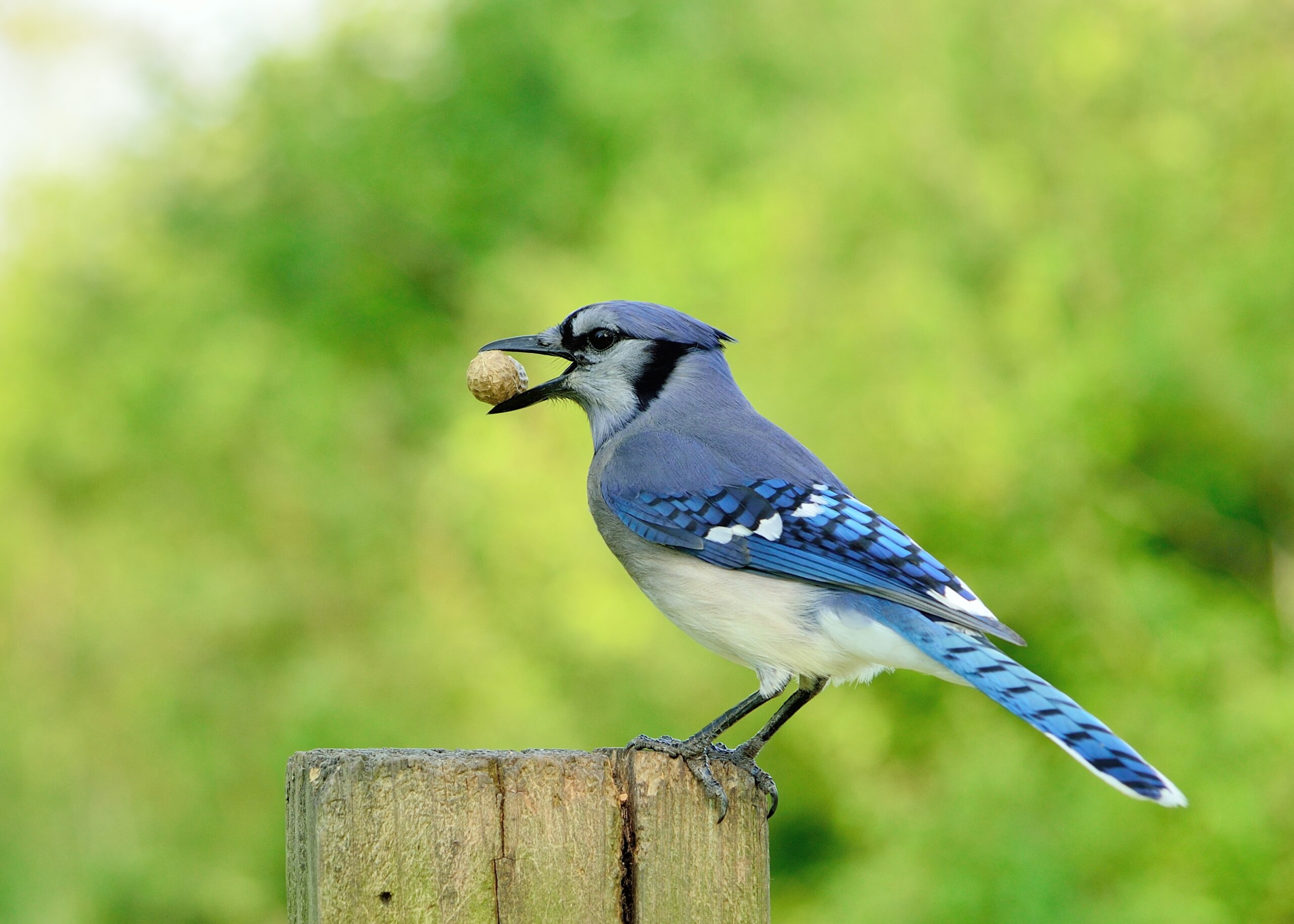 | Blue Jay |
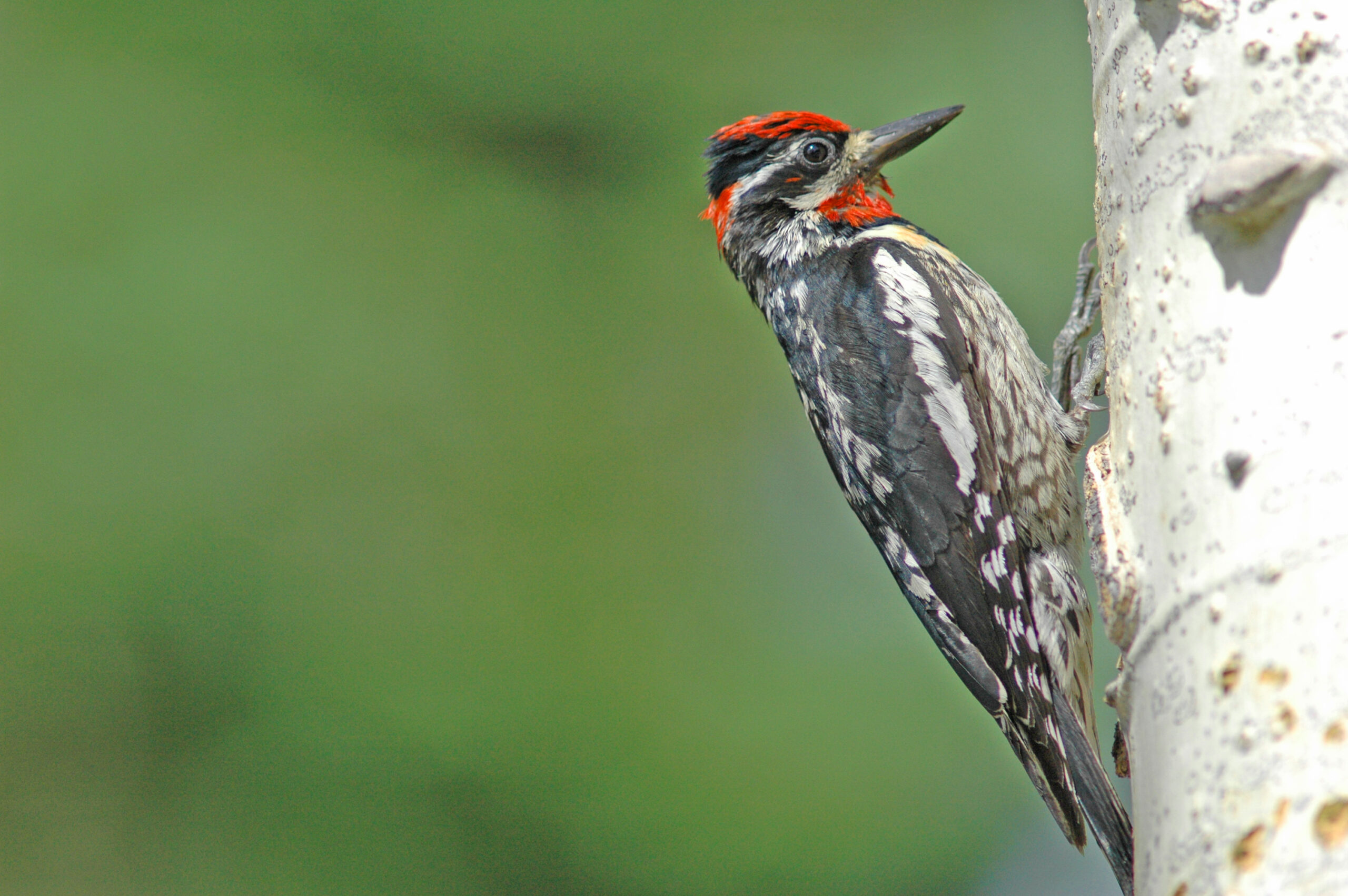 | Yellow-bellied Sapsucker |
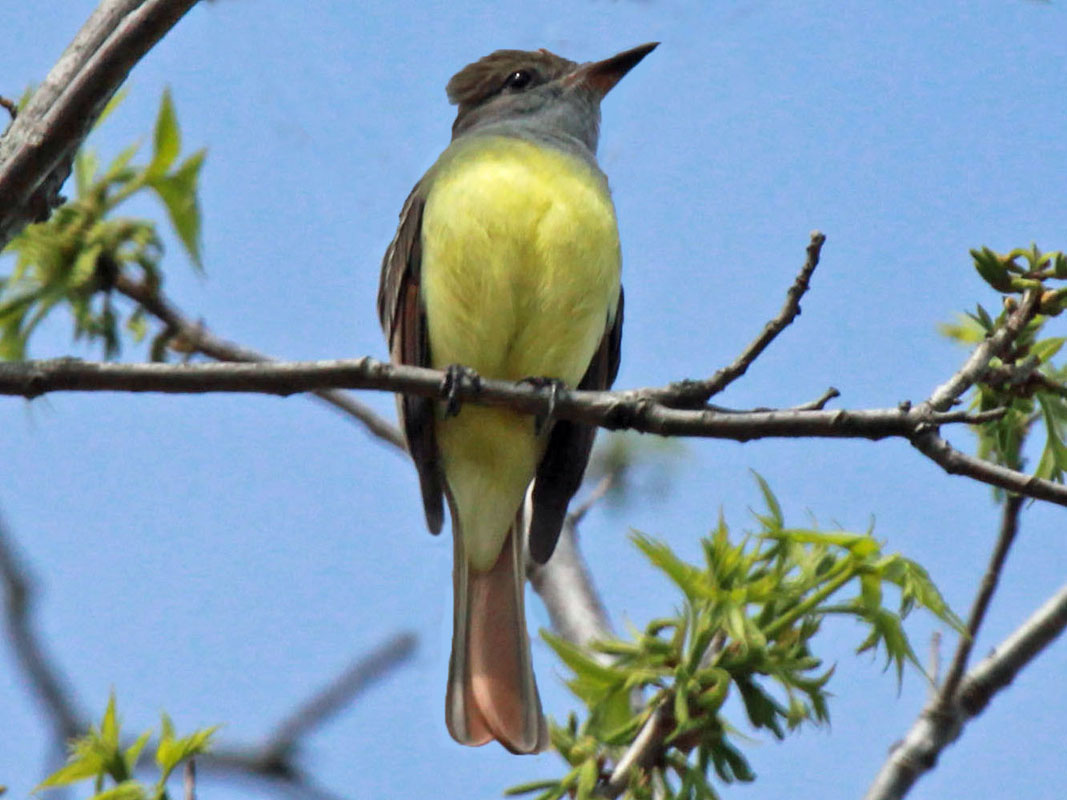 | Great Crested Flycatcher |
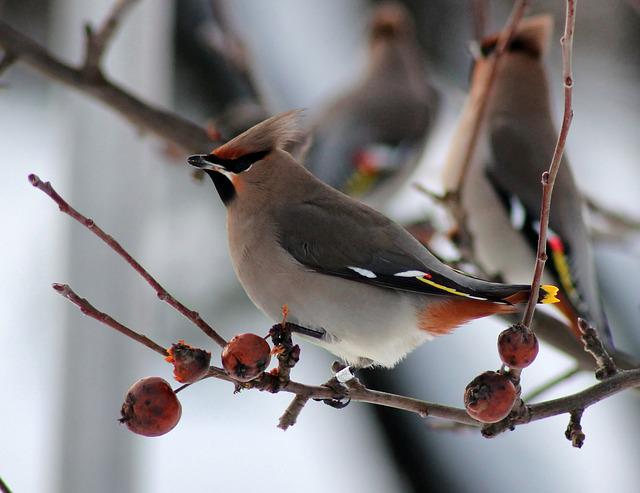 | Bohemian Waxwing |
 | Cedar Waxwing |
 | Horned Lark |
 | Eastern Bluebird |
 | American Goldfinch |
 | Mourning Dove |
 | Chestnut-sided Warbler |
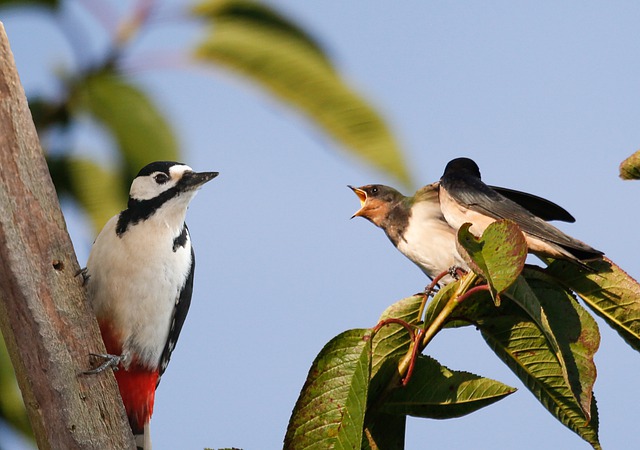 | Tree Swallow |
 | Snow Bunting |
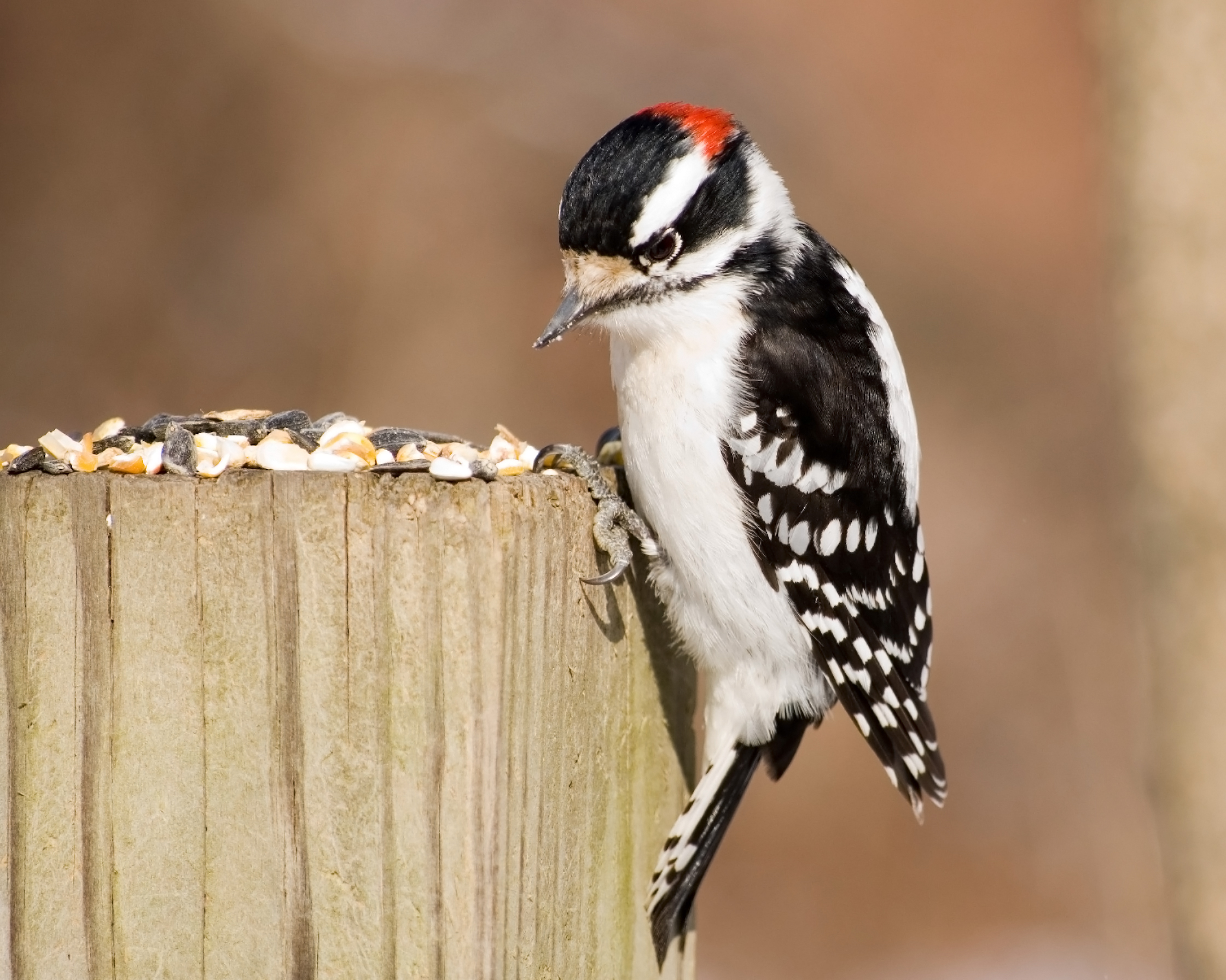 | Downy Woodpecker |
 | White-breasted Nuthatch |
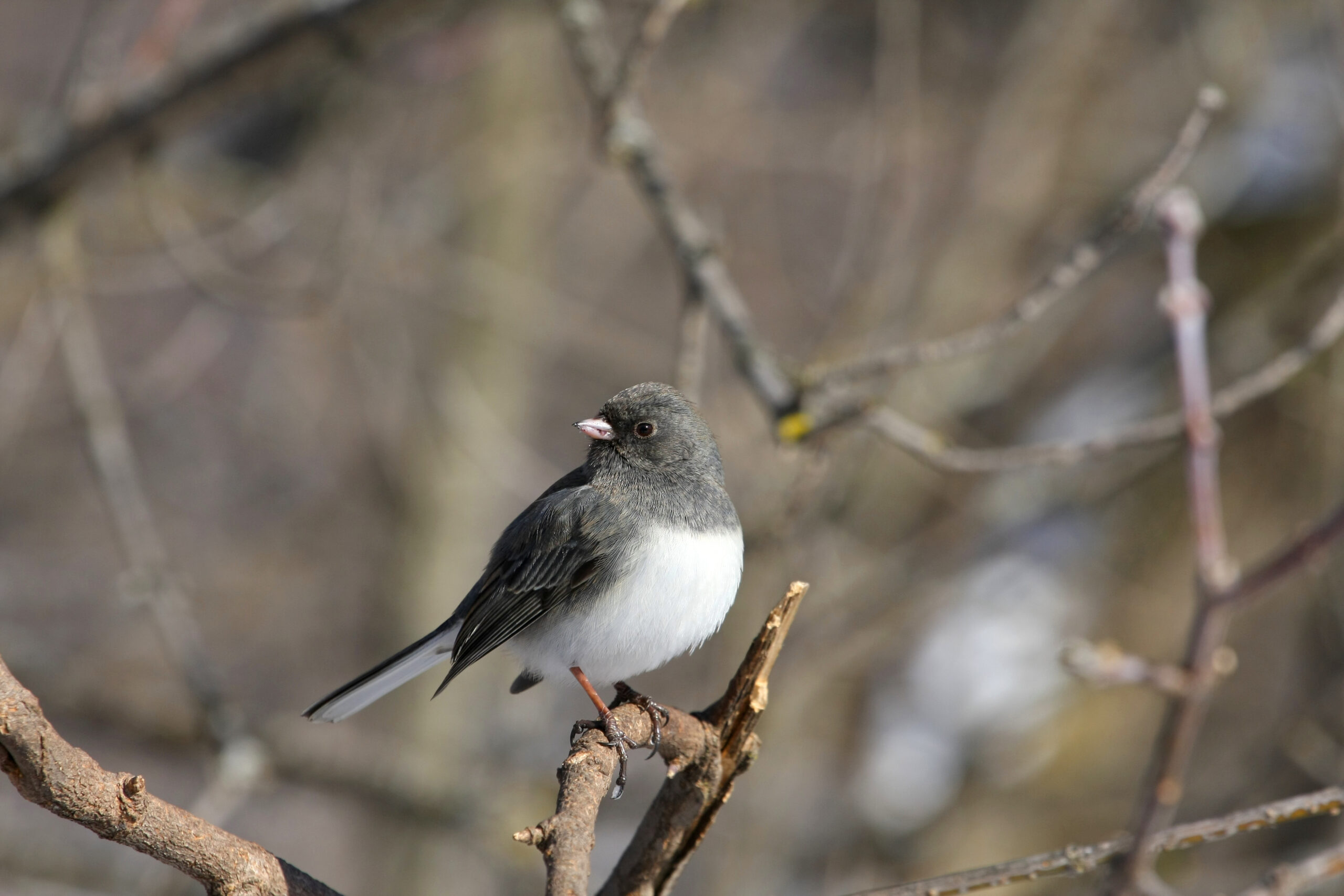 | Dark-eyed Junco |
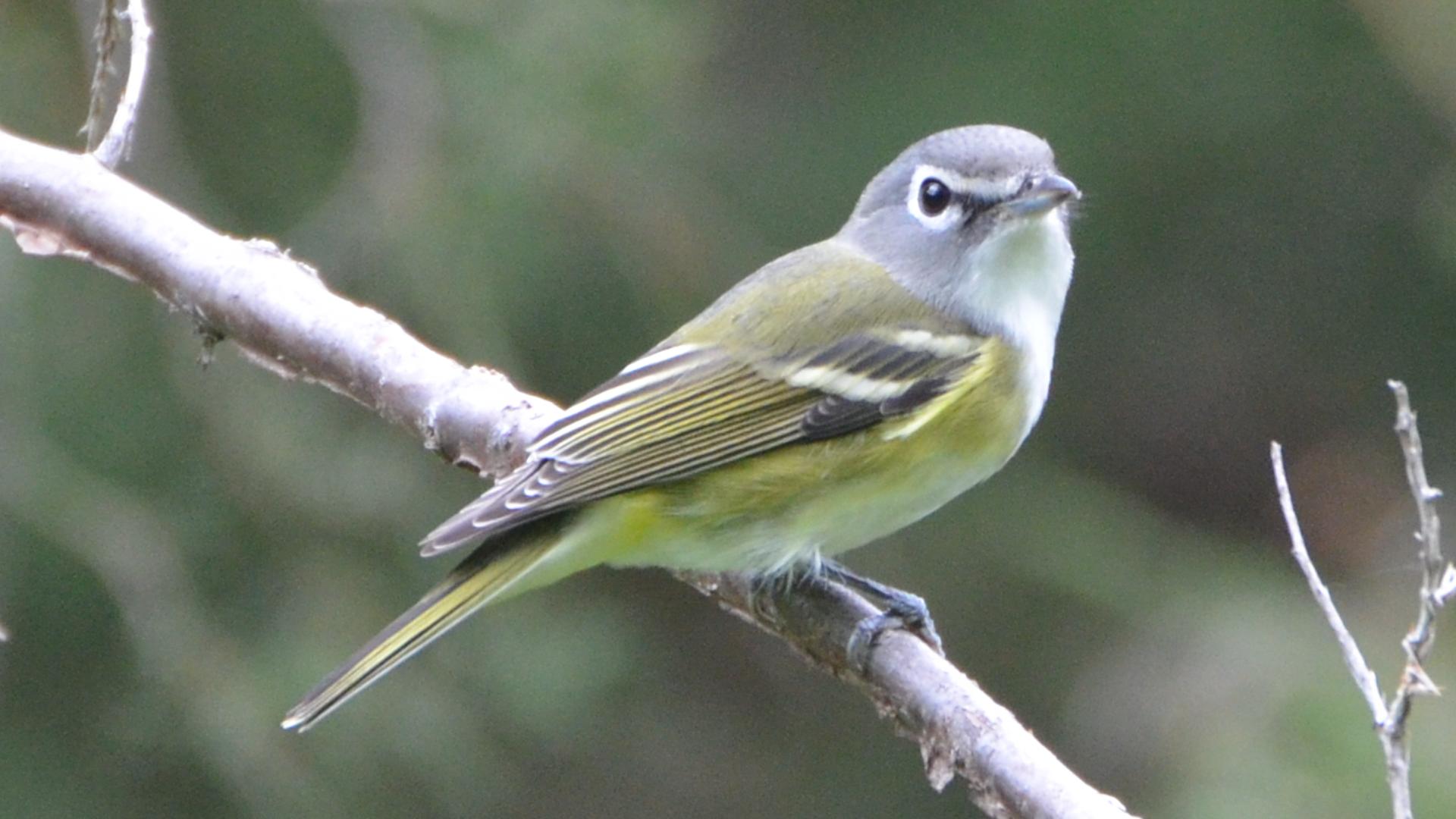 | Blue-headed Vireo |
Common Birds in Vermont
1. American Robin

The American Robin is a tiny migratory songbird with red and black plumage. Male American Robins are distinct from female American Robins in that males have more colorful plumage than females. These birds pay a visit to a large number of states.
The male and female bodies are also different in size and shape; female bodies are thinner and smaller, while male bodies are somewhat larger.
The male starts singing to attract the female; the female guards the babies and sits on them, while the males provide food and protection.
Small creatures and their eggs, small nuts, and berries are among the majority of their foods. They also consume the seeds of tiny shrubs and bushes.
2. Yellow-rumped Warbler

The Setophaga coronata, the Yellow-rumped Warbler, is a tiny bird endemic to North America. Their back, wings, and neck are colored brown, white, yellow, and black whereas their stomach is white with black stripes covering the neck.
They have a 5.9-inch body length, a 10-inch wingspan, and a bodyweight of 14 grams. Male and female bodies are slightly different in shape and size. In comparison to males, females have pale hues. They come to the feeders often, mostly for the peanut butter, and suet sunflower seeds, raisins.
Food
Insects and insect larvae make up most of their food, although they also consume tiny grains, berries, and fruits. They make a pleasant sound that they use to attract females or to announce their territory.
3. Black-capped Chickadee
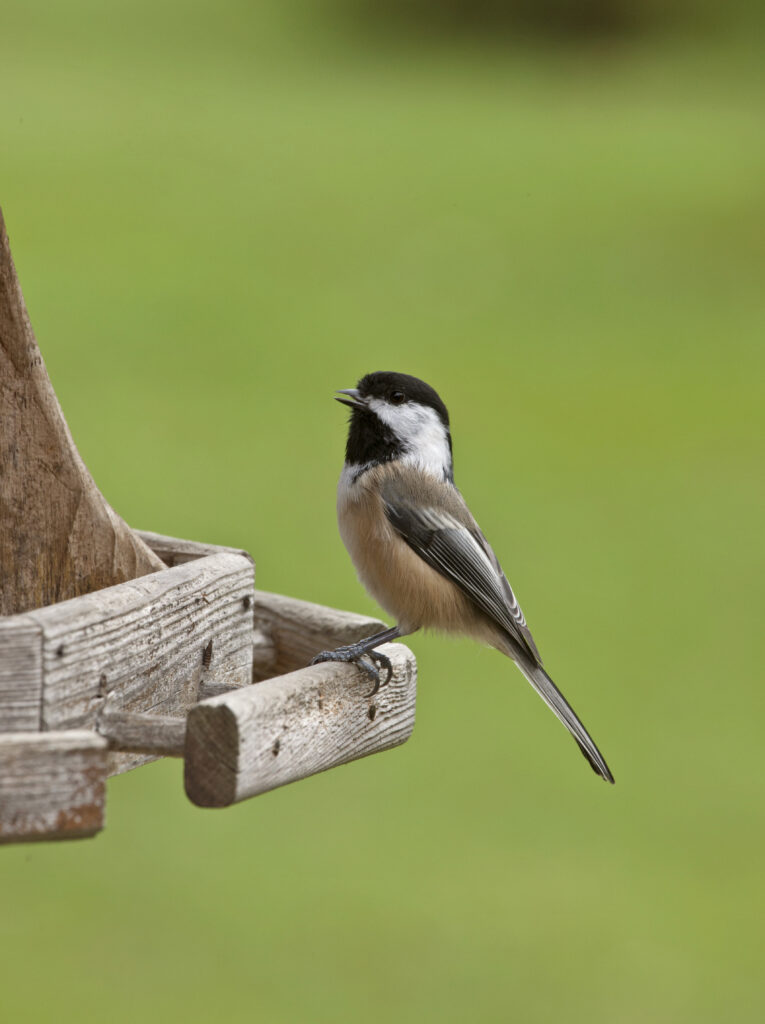
Black-capped Chickadees feature grey backs and long, slender grey tails with white outer feathers and short, grey wings with a little white border.
This bird’s underside and breast are white, with a light tan border right below the wings, and their faces are white with a tiny, black bib and a huge, black cap that falls over most of the head, finishing at a mid-eye level.
The beak of these birds is trapezoidal and black. These are tiny creatures having a round spherical body that can easily be identified by their “black cap” and black bib. Their underbodies are fluffy and light, and their cheeks are completely white.
Food
These birds can be seen all around the year in Vermont. These birds like suet, black sunflower seeds, berries, and nuts.
4. Pileated Woodpecker

The Pileated Woodpecker, commonly known as the Dryocopus pileatus, is a medium-sized woodpecker that is native to the United States. The pileated red hat of this bird is particularly well-known. The red crest on top of its head makes it easy to spot them.
They are distinguished from other Woodpecker species by their distinctive cap. An adult woodpecker can weigh anything from 8 to 24 ounces.
Size
The typical body size of an adult Pileated Woodpecker is 17 inches, with a wingspan of about 28 inches. Pileated Woodpecker males and females have slightly distinct appearances. Males have a red line from their beak to their neck, while females have a black line.
Habitat & Food
They, like all other woodpeckers, boreholes in tree trunks. They eat from the bird feeders regularly. They consume a variety of bugs, insects, caterpillars, worms and invertebrates, grass seeds, and tiny grains.
They consume a variety of fruits, cherries, and vegetables as well.
5. Tufted Titmouse

These creatures have white cheeks with lovely blue-gray crests that extend down the rear of the head and softly surround the eye from above behind. The short, thick, triangular black bill has a conspicuous black mark above it.
These birds have a back of a blend of gray and black coloration, having blue-gray wings of an intermediate length and lengthy blue-gray tails. The tail of these birds is lighter beneath, while the breast and underside are white.
In Vermont, the Tufted Titmouse can be seen all year. Most seed feeders will be visited, and they will be offered mixed seed mixes and sunflower seeds.
6. Blue Jay
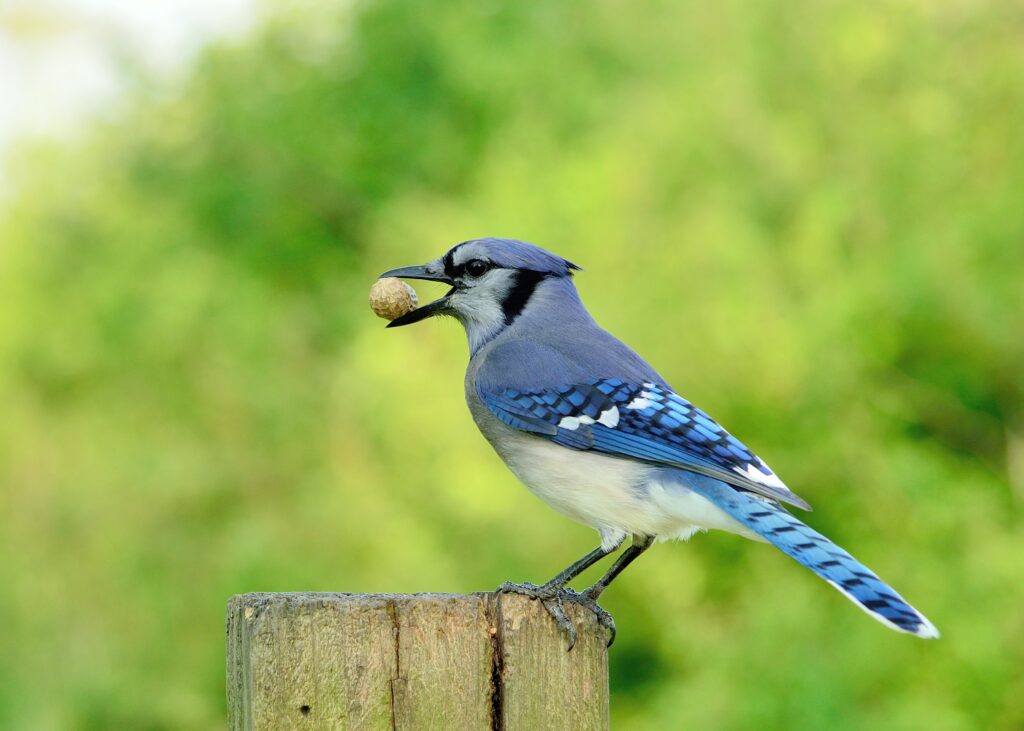
Bright blue rears, moderate length wings, and lengthy tails of blue color with white underparts distinguish Blue Jays. The tails feature a more symmetrical appearance, with light blue squares defined in darker blue running along both sides of the tail.
Blue Jays adore the forest’s border, especially Oak trees, which provide delectable acorns. Because they are not shy birds, you can find them in woodlots and cities. Black Oil Sunflower Suet, smashed walnuts, and seeds are favorites of Blue Jays.
7. Yellow-bellied Sapsucker

The Yellow-bellied Sapsucker, also known as Sphyrapicus varius, is a tiny woodpecker that may be found in the northeastern United States. Their yellow stomach and sap-sucking behavior are reflected in their name. Male Yellow-bellied Sapsuckers are whiter and have more lustrous colors compared to females.
The plumage of the Yellow-bellied Sapsucker is red, white, and black. Their wings and upper parts are white and black striped, while their stomach and chest are white. The bird’s head and neck are crimson.
Size & Weight
An adult bird’s body length can range from 19 to 21 centimeters, with almost 13.4-to 15.8 in wingspan. An adult bird can weigh anything from 35 to 62 grams.
Habitat & Food
The Yellow-bellied Sapsucker feeds on the ground and in the branches of various trees. They devour tiny insects and arthropods. The Yellow-bellied Sapsucker feeds on tree sap, nuts, and berries from various plants. They don’t go to the bird feeders very often.
8. Great Crested Flycatcher
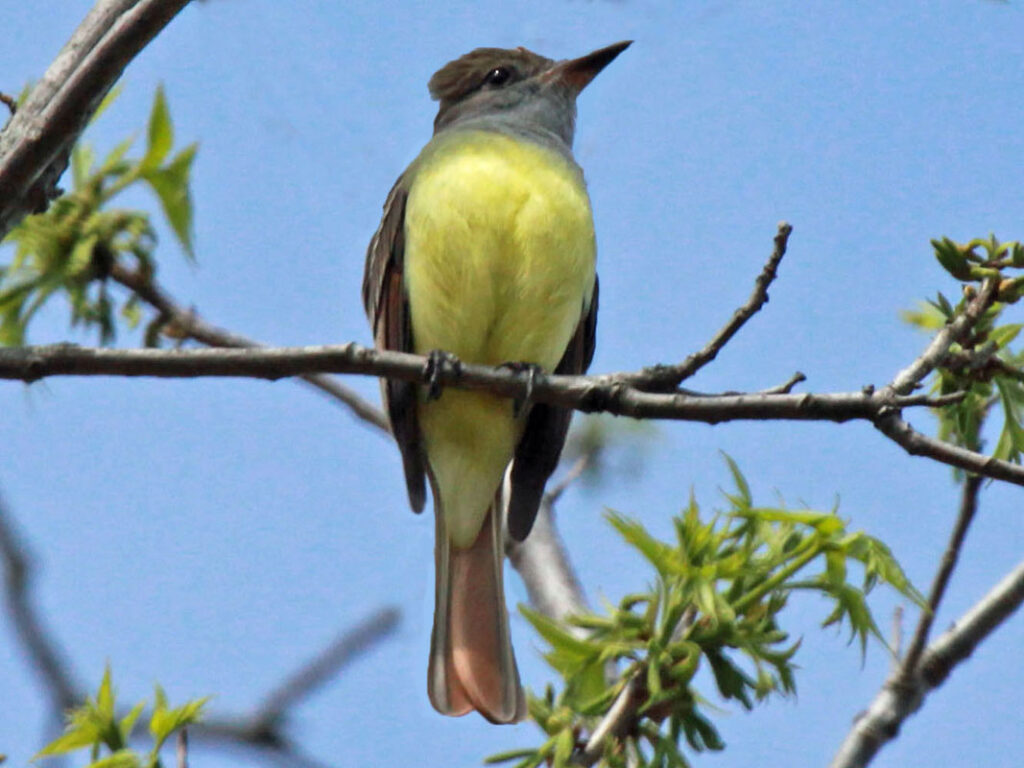
The underside and chest are a wonderful blend of a yellow and white hue, and the birds have grey faces with a white chin. Despite the name, they have a little but attractive grey crest.
The plumage of Great Crested Flycatchers is primarily grey with varied hues of reddish-brown. Their backs are grey, with medium-length grey wings and lengthy, notched grey or grey and reddish-brown tails.
These birds spend much time in woodlots and like open woodlands. They like a slightly thick forest when it becomes colder, but just by a fraction.
They may be found wherever there are trees and greenery. These birds enjoy eating insects as well as tiny berries.
9. Bohemian Waxwing

This bird’s underside and breast are light greys, with a smattering of brown on the sides, and its face is mostly grey with a big dosage of peach hue across the cheeks, rear of the skull, and above the eyes.
With grey backs and medium-length grey wings, and short, stocky grey tails that are pale and peach hue underside, Bohemian Waxwings have an unusual appearance. The wings have white patches and waxy red tips.
These birds have attractive crests, black chins, and a black mask that folds upward behind the eyes and ends just before the rear of the skull. The bills of these birds are short and sturdy black.
Waxwing juveniles lack the peach color intensity and red-tip patterns on their faces, and their underside and breast are grayer with streaks.
Habitat & Food
But they’re more likely to attend your garden. You may coax the Bohemian Waxwing into a yard feeder visit by setting out various foods such as raisins, cherry, or even chopped apples.
These species prefer open places in evergreen woods, but they may go out to orchards, parks, and even streams, providing some shelter and good feeding.
10. Cedar Waxwing

The Cedar Waxwing, also known as Bombycilla cedrorum, is a medium-sized bird. This bird is one of the tiniest waxwing species in the northern hemisphere. This bird inherits a brown color and shiny yellow and grey streaks on its plumage.
Additionally, they also possess a black mask that covers the entire face bright spot of red coloration can be found in the middle of the silky brown feathers of their wings.. this bird also contains a brownish crown atop of its head.
This bird has black eyes, and a striation extends from the eyes to the rear part of the head. They also contain a small but powerful beak.
Length & Weight
The Cedar Waxwing has a body length of almost 6–7 inches and a distance between its wings of 8.7-11.8 inches.
This bird weighs roughly 30 grams as an adult. Males look after the female until the eggs are hatched. Soon after the eggs are hatched, the female flies away to search for food for its young ones.
Food
The diet of these birds comprises fruits, berries, and various small plants, and they also tend to eat caterpillars, worms, and spiders.
11. Horned Lark

Male Horned Larks have a basic but appealing coloring on their backs, large wings, and medium-length tails, with a reddish-brown coloration throughout their body.
The underside and breast are greyish white with sandy brown bordering and a white rump, while the tail has a white underside.
The bird inherits a yellowish chin and some yellow around the bottom of the throat that continues halfway to the rear of the head, making its face a little more complex.
A band of black coloration is located at the base of the throat at the bottom of the throat, and a black mask curves downwards across the cheek.
This creature has quite a tan coloring above the mask, and a thin black ring encircles the forehead and ends in the back with short, horn-like tufts. The beaks of these birds are short, robust, and slightly curled black.
Females have the same color as males, but the colors are less well defined in their borders, causing them to blend more than males.
Habitat
These birds may be found in arctic regions, grasslands, and desert scrub areas, although they like their habitat to be as plain as possible. This bird’s diet primarily comprises insects, although it also enjoys berries.
12. Eastern Bluebird

Bluebird males have a beautiful plumage with a bright blue back, large blue wings, and a small blue tail. The rump, breast, and underside are all white, but it is bordered on the side by amber or brick-red vest that becomes denser as it reaches the breast.
This orange reaches the bird’s chin and throat and then spreads horizontally to the rear of the next bird. The rest of the face, including the rear and bill, will be a deep blue hue. Females will have grey heads, grey wings, and tails with faint blue flecks.
These birds have a short, sturdy, and straight beak with a small bend at the top. Seeds, suet, and raisins are three Eastern Bluebird favorites.
13. American Goldfinch
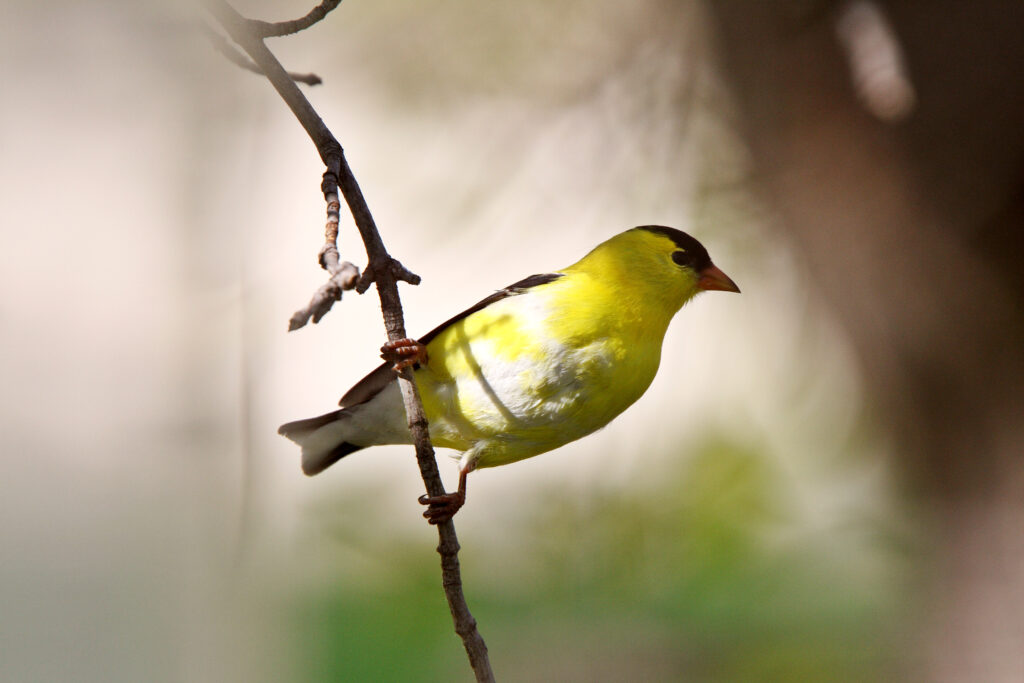
Male American Goldfinches have brilliant yellowbacks and long, black wings with two white wing bars apiece and a collection of vertical patterns in the middle of the inner wing.
They have little black tails with white markings and some white on the underneath of the tail, which comes from the white patch on the bird’s rump.
This bird has a brilliant yellow underside and breast and a bright yellow face with a little black half-cap on the forehead and a medium-length, conical orange beak.
Females have olive upper body colors with subdued yellows below, and both genders shift out their yellows for brown plumage in the winter. The black present on their beaks and wings make them easy to detect at any time of the year.
Food
Goldfinches can be seen all year round in Vermont. Goldfinches love thistle feeders; they may also eat sunflower chips.
14. Mourning Dove
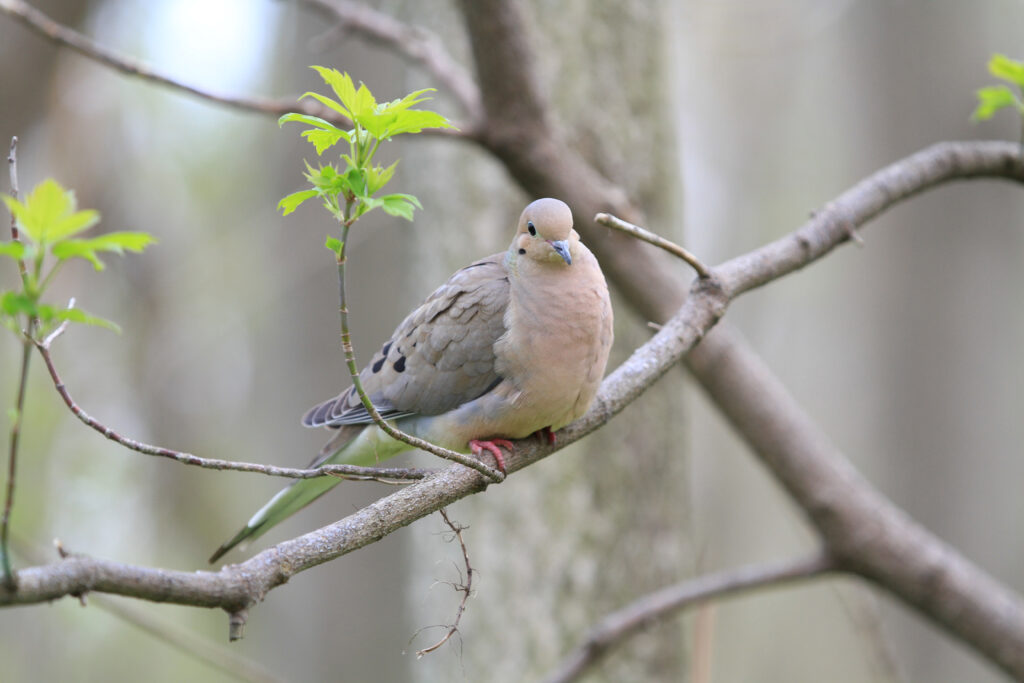
The Mourning Dove has a plump appearance, with a grey back and big, grey wings with a healthy coloring of light brown toward the center and some large, prominent black dots. This bird’s underside and breast are white with a significant tan coloration.
These Doves have wingspans of roughly 17.7 inches and measure 9.1 – 13.4 inches from tip to tail.
Habitat & Food
These birds avoid thick woodlands, preferring pastures, meadows, or even bare ground when it comes to feeding. The Mourning Dove prefers White Proso millet and hulled Black Oil Sunflower seeds, broken corn.
15. Chestnut-sided Warbler

Chestnut-sided Warblers have yellowish-grey backs (mainly grey) and medium-length grey wings. They have grey, notched tails that are notched on the undersides and have some white on the rump.
This bird has a stunning, bright-yellow crown with a tiny black line running down the rear of its head. The beaks of these birds are robust, straight, and slender.
Length
These birds are tiny, measuring between 4.7 and 5.5 inches in length and 7.6 to 8.2 inches wingspans.
Habitat & Food
These birds enjoy places dense with brush, bramble, bushes, and thorns and may be found in deciduous woodlands and around Oak trees. This bird’s diet is largely insectivorous, but it eats fruits occasionally.
16. Tree Swallow

The Tree Swallow (Tachycineta bicolor) is a small North American bird renowned for its tree-chopping activity. The Tree Swallow is a bird with blue and white plumage. Their plumage is separated into two colors: a sparkling blue on the back and wings and a white belly and underparts.
The bird’s eyes and tail are both black. Females are slightly smaller than males in size, weight, and wingspan.
Food
They often consume food from the bird feeder. Favorite foods include little seeds and nuts, and also cherries and fruits. Insect larvae, as well as small insects and worms, are eaten by these birds.
17. Snow Bunting

Male Snow Buntings have a wide range of plumage, but you can predict their backs, wings, and tails during mating season, all of which are white. This bird’s underside and breast are usually white.
Females are similar to males but have browned on their upper bodies instead of blacks. They are 5.9 inches long from tip to tail and have wingspans of 11.8 inches.
Habitat & Food
Snowy, rocky locations and coasts or the edges of streams and ponds are ideal for these birds, as long as there is some shrub cover. These birds prefer nyjer thistle and Hulled Black Oil Sunflower seeds.
18. Downy Woodpecker

Downy Woodpeckers feature white backs and black wings, and short black tails with white undersides. This bird has a white underside and breast and a white face with a black mustache line.
These birds have black bills that are medium in length, slender, and straight. These tiny birds are the shortest North American Woodpeckers, measuring 5.5–6.7 inches in length and 9.8–11.8 inches wingspans.
Habitat & Food
They like open forested environments with dense weeds or brush nearby, where they may feed by dropping from branches into the cover.
They can also be seen at well-stocked feeders in gardens, parks, and backyards. Suet, and chunky peanut butter, are favorites of these birds.
19. White-breasted Nuthatch

These birds contain a bluish-gray back and long, blue-gray wings with a black border, and a short, blue-gray tail with a white underside. They have a white underside and breast with a noticeable reddish-brown scar on the underside and largely white faces, and this bird also has a strong, straight, and long bill that is frequently black on top and white below.
Length
The length of these birds is 5.1 to 5.5 inches, and their wingspans are 7.9 to 10.6 inches broad.
Habitat & Food
These birds like open forested habitats, particularly deciduous ones. They can also be found in coniferous woodlands along forest edges. On the White-breasted Nuthatch, a combination of suet and peanut butter is a tried-and-true favorite.
20. Dark-eyed Junco

It is a bird with a dark grey or brown back, medium-length grey wings, and long grey tails with white undersides. This bird’s underbelly and breast are white, with a grey skirting that starts from the underbelly and thickens as it rises.
Juncos have sturdy, medium-length, conical pink bills, and their faces are dark grey or brown. These birds are between 5.5 and 6.3 inches long, with wingspans ranging from 7.1 to 9.8 inches broad.
Habitat & Food
These birds favor evergreen or coniferous-deciduous mixed woodlands in the summer, but they can be found in gardens and backyards. These birds like millet White Proso millet, Sunflower seeds, and crushed corn.
21. Blue-headed Vireo

Blue-headed Vireos have grey backs with mossy green coloring, medium-length grey wings and tails, green coloration on the wings, and some white edging towards the center of the inner wing.
The tails have a white border, and the bird’s underside and breast are white, with a small amount of green flanking right underneath the wings.
Lastly, this bird has white spectacles and a black and white or black beak that is straight and medium in length.
The length of these birds ranges from 4.7 to 5.9 inches, with wingspans of 8.7 to 9.5 inches. When it’s warm outside, these birds favor woodland places, but they’ll be found pretty much anyplace there are trees with some brush cover in the winter.
Habitat
Mealworms, diced apples, or entire, tiny blueberries are excellent ways to attract and hold the Blue-headed Vireo’s attention.
Conclusion
A wide range of common bird in Vermont have been discussed in this article. Their characteristics, .physcial feature, and their food preferences have also been discussed in this article. These details can help you spot these birds.
And if you are looking to lure these birds to your backyard feeders, their diet is also discussed, so there won’t be any problem in inciting these birds to your backyards.
FAQ
What is the name of the tiniest waxwing of the northern hemisphere?
Cedar waxwing is the tiniest waxwing species in the northern hemisphere.
Which bird is present all year round in Vermont?
In Vermont, the Tufted Titmouse can be seen all year.
What is the state bird of Vermont?
Hermit thrush is known to be the state bird of Vermont.
Which woodpeckers are seen much often at backyard feeders?
Downy woodpeckers pay frequent visits to backyard feeders.
Last Updated on March 22, 2023 by Lily Aldrin

Hi,
I live in Island Pond, VT and I am seeing a small bird the size of a black capped chicadee but it has a reddish chest. I have been looking on different websites to figure it out but so far no luck. Any ideas?